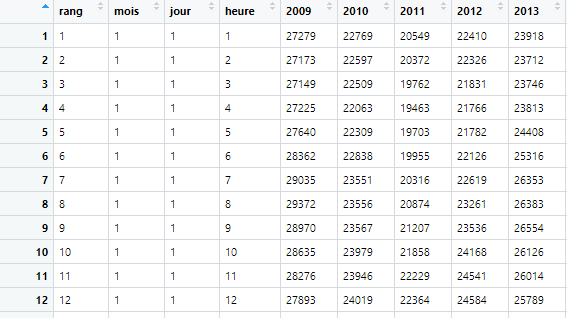Hi,
I am new at coding so something as simple as doing a condition means seems hard.
In fact, what I am trying to do is to have the average consumption by hours (& for each year, but this is ok).
My data are like this :

I have a hard time finding the i e hours average/year.
I found this on the web :
mean(HQ$2009|HQ$heure == 2, na.rm = TRUE)
[1] 1
Which 1 is not a possible value.
After digging on the web (conditional mean) I found the tidyverse, but I don't know if it's really this that I want :
hours_groups <- group_by(test_2, heure)
summarise(hours_groups, c_count_mean = mean(hours_groups, na.rm = TRUE), n = n())
The warning : In mean.default(hours_groups, na.rm = TRUE) :
argument is not numeric or logical: returning NA
I am a bit lost, because I would have been able to do it in 4 lines in stata. (with a for & if loop) :
for(h in hours) {
if (h == HQ$heure) {
mean(HQ$2009, na.rm = TRUE)
}
}
Wich is not working, but it was my first try since it was my stata's intuitions.